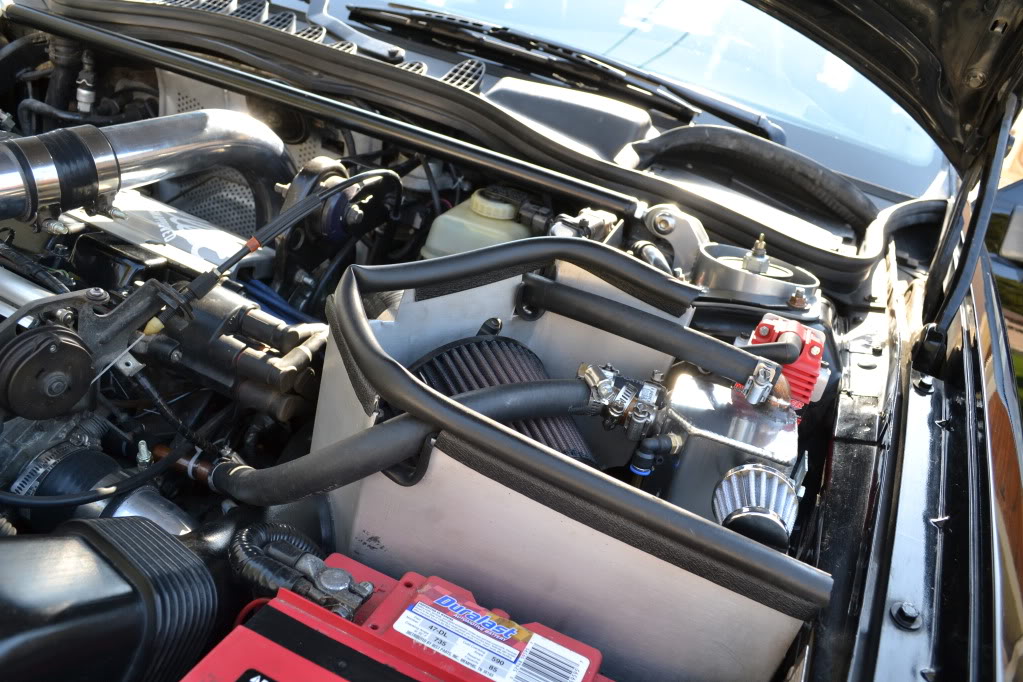How To Install An Oil Catch Can

Like all mechanical contraptions, your vehicle needs oil to keep the moving parts running smoothly, but that oil can also cause a few problems. Oil catch cans prevent the harmful buildup of oil in the intake manifold, turbocharger, pipes, and intercooler so that you can get the most out of your vehicle's performance parts. A quality oil catch can also prevents oil from entering the pressured turbo piping that could lead to detached couplers. Several brands of catch cans are available among the vast inventory on eBay. Mishimoto oil catch cans solve the problem caused by oil vapors getting into the intake system and lowering combustion temperatures, which in turn reduces the overall efficiency of your vehicle.
Our goal was to create a custom dual catch can, half to catch the coolant overflow from the radiator and the other half to trap and contain oil from the crankcase. The catch can described in this article will sort of mimic the same principle, although the catch can will vent to open atmosphere. The reason for this is particular, my car no longer is fuel injected, and instead uses carburetors, so the valve cover was disconnected - and in being so, oil would soil the engine bay.
The brand's baffled oil catch cans feature a special inlet pattern that allows oil to condense and the internal baffle makes sure that no oil escapes even when you take corners at high speed. Once you install oil catch cans, be sure to maintain them by replacing the single-unit filters so you can have the dynamic performance you expect from your vehicle.

This is how the oil catch cans are mounted in my 3.3. Stinger: I bought two OCC on spec in December, because I presumed two were needed, one for each side. Shortly after delivery of the car, I took it to my mechanic and asked him whether he was prepared to mount the cans. Rukmini kalyanam book in telugu pdf.
He checked out the engine and declared, that the can(s) should go on the passenger side, because that’s where the PCV connection is located. According to him, there is only one PCV hose and connection on the engine. I then took a piece of 2” x 2”“ aluminum angle (2” X 2 ½” or 2” X 3” would have been better, but that’s all I had handy) and cut three slots wide and deep enough to accommodate 3 plastic pins that hold a rubber seal for the hood in that part of the engine bay. This enabled me to slide the aluminum angle between the black plastic and rubber seal until it made contact.
Following that, I marked a location for four #10 1” screws on the horizontal part of the alu angle but used only two when all was finally said & done. I pulled the aluminum angle back out and mounted the cans, one would have done the trick, but I had two, to be connected in line. The cans were mounted on the aluminum angle with their top level or a bit lower than the hood’s rubber seal. The whole contraption was then taken to my mechanic who used the connectors supplied with the cans but not the hose pieces. He used heavier 3/8” rubber Power Steering hose made by Continental to counteract the vacuum in the system. A thinner hose will collapse when the engine is running.